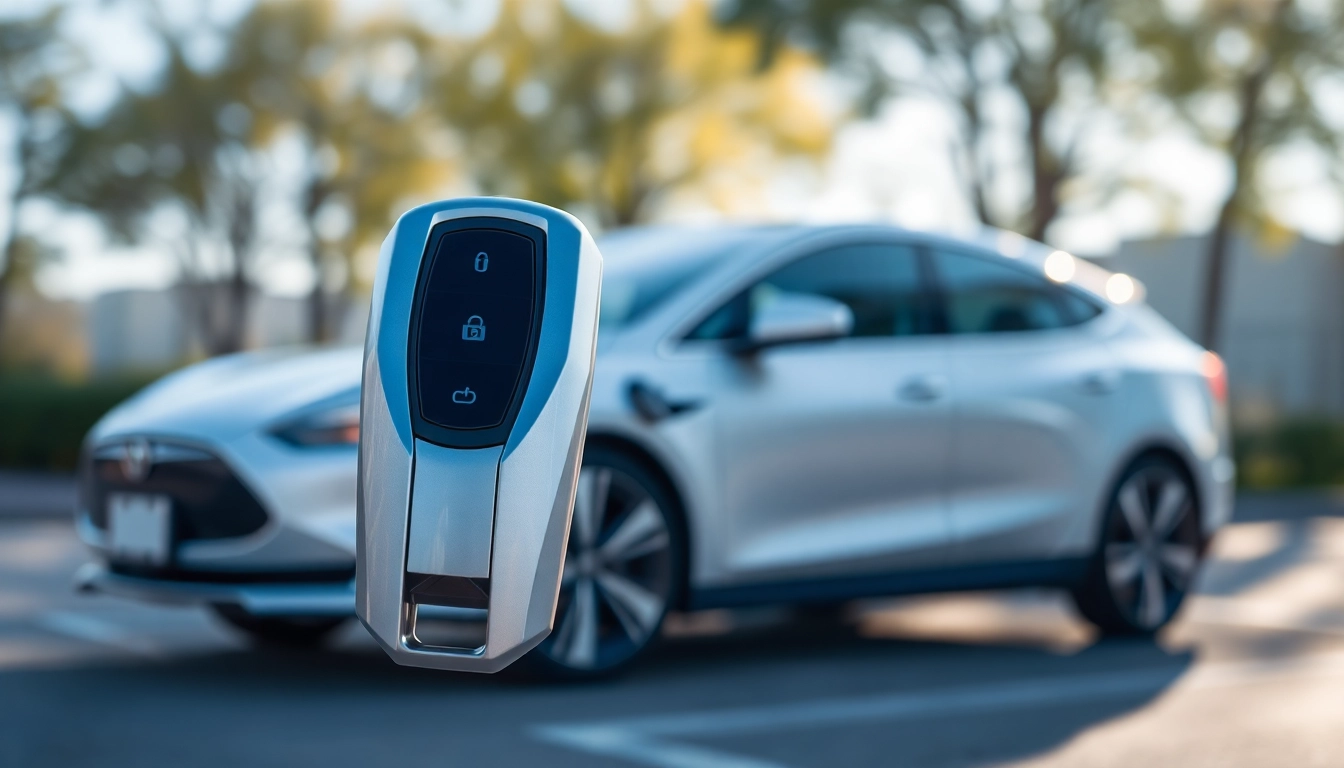
Understanding the Airbnb Automation Tool
What Is an Airbnb Automation Tool?
An Airbnb automation tool is a digital solution designed to streamline the management of short-term rental properties listed on platforms like Airbnb. These tools often encompass a variety of functions, including booking management, communication automation, pricing optimization, and guest experience enhancement. By leveraging technology, property managers and hosts can minimize manual tasks, reduce errors, and ultimately save time, allowing them to focus on the strategic aspects of their business. As the short-term rental market grows increasingly competitive, such automation tools have become nearly indispensable for maximizing efficiency and profitability.
Key Features and Benefits
The core benefits of an Airbnb automation tool are extensive. Firstly, they allow for seamless integration with booking platforms, ensuring that both hosts and their guests are provided with real-time data and notifications. Features such as automated messaging create a standard of communication that enhances the guest experience, providing quick responses to inquiries, check-in instructions, and post-stay surveys.
Notable features may also include:
- Dynamic Pricing: Automatically adjusts rental prices based on demand, competition, and seasonality.
- Calendar Sync: Enables syncing across multiple listings to prevent double bookings.
- Task Automation: Allows property managers to create workflows that handle routine tasks without manual input.
- Data Analytics: Provides insights into performance metrics, occupancy rates, and revenue trends, allowing for better decision-making.
How It Streamlines Property Management
By employing an Airbnb automation tool, hosts and property managers can streamline their operations significantly. For instance, automated responses can address common guest questions, while intelligent pricing models can maximize earnings without constant manual oversight. Additionally, calendar synchronization ensures that any changes in availability are promptly reflected across all platforms, reducing the risk of conflicts.
Moreover, task automation helps create an organized workflow, where reminders for cleaning, maintenance, or property inspections can be scheduled automatically, ensuring that properties remain in optimal condition without the constant attention of property managers.
Setting Up Your Airbnb Automation Tool
Step-by-Step Installation Guide
Setting up an Airbnb automation tool is generally straightforward, although it can vary depending on the specific software used. Here is a general step-by-step guide to ensure successful installation:
- Choose Your Tool: Evaluate various automation tools and select the one that best fits your needs.
- Sign Up and Create an Account: Register with the chosen platform, ensuring you have any necessary business verification documents ready.
- Link Your Airbnb Account: Connect your automation tool to your Airbnb account using the API provided. This typically requires authentication through your Airbnb account.
- Configure Settings: Customize your preferences in terms of pricing strategies, automated responses, and other operational parameters.
- Test the System: Conduct tests by simulating bookings to ensure everything works seamlessly before going live.
Integrating With Existing Platforms
Many hosts and property managers already utilize various platforms for their property management needs, such as accounting software, customer relationship management (CRM) solutions, or housekeeping management systems. A robust Airbnb automation tool should provide integration capabilities with these existing systems to create a cohesive ecosystem.
To integrate successfully:
- Check for Compatibility: Ensure that the automation tool supports integration with your current systems.
- Use API Connectors: Leverage APIs to connect the automation tool with existing applications, facilitating data flow and communication.
- Conduct Tests: After integration, thoroughly test interactions between the systems to ensure data consistency and operational integrity.
Customization Options for Your Business
Customization is critical to tailoring the Airbnb automation tool to align with your specific business model and market demands. Many tools offer flexible features that can be configured to suit your unique operational tactics. These include:
- Branding Elements: Customize interfaces and communications with your logos and color schemes to maintain brand consistency.
- Automated Messaging Templates: Develop templates for varying scenarios, such as booking confirmations, check-in information, or personalized follow-ups post-stay.
- Dynamic Pricing Algorithms: Adjust pricing strategies based on your specific market analysis or historical data trends unique to your properties.
Best Practices for Using an Airbnb Automation Tool
Maximizing Efficiency and Time Savings
To get the most out of your automation tool, implement best practices that can lead to increased efficiency and a significant reduction in time spent on redundant tasks:
- Regularly Review and Update Automation Settings: Keep your automation settings optimized by reviewing them frequently to ensure they align with current operational goals.
- Actively Engage With Guests: Utilize the automation tool to enhance guest engagement through thoughtful automated communications that invite further interaction.
- Focus on Key Performance Metrics: Use analytics to identify areas that require attention or improvement, allowing you to strategically allocate resources where they matter most.
Enhancing Guest Experience Through Automation
The guest experience can be significantly enhanced when using an Airbnb automation tool. Features that personalize the stay can lead to higher guest satisfaction rates and ultimately more positive reviews:
- Automated Pre-Arrival Information: Send essential details regarding the stay, such as check-in procedures, nearby attractions, and house rules.
- Follow-Up Communications: Post-stay surveys not only gather feedback but also express appreciation for their choice of stay, encouraging repeat bookings.
- Real-Time Assistance: Automated communications can provide instant support for guests encountering issues during their stay, enhancing their overall experience.
Common Pitfalls and How to Avoid Them
Despite their advantages, using an Airbnb automation tool comes with potential pitfalls that users should be wary of. Common mistakes include:
- Over-Automation: While automation is beneficial, excessive automation can create a robotic experience for guests. Balance automated messages with a personal touch.
- Lack of Regular Monitoring: Failing to monitor the tool can lead to outdated information being sent or scheduling errors. Regularly check on all automated elements.
- Ignoring Guest Feedback: Not analyzing guest feedback can detrimentally affect service quality. Use feedback as a critical touchpoint for improvement.
Measuring Success with an Airbnb Automation Tool
Key Performance Indicators to Track
To ensure the effectiveness of an Airbnb automation tool, tracking key performance indicators (KPIs) becomes essential. The following metrics provide valuable insights into operational success:
- Occupancy Rates: Monitoring the percentage of booked nights versus available nights provides insights into property desirability.
- Average Daily Rate (ADR): Measuring revenue per available room gives clarity on pricing effectiveness.
- Guest Satisfaction Scores: Analyzing reviews and ratings can indicate the guest experience level and highlight areas for improvement.
Analyzing Visitor Engagement and Feedback
Engagement metrics play a critical role in understanding guest interactions. Utilizing tools that analyze both website traffic and booking behaviors can boost understanding:
- Email Open Rates: Monitor how many recipients engage with your automated messages.
- Click-Through Rates: Assess how recipients respond to calls to action within those communications.
- Feedback Analysis: Compile guest feedback data to identify recurring patterns that may indicate service strengths or weaknesses.
Adjusting Strategies Based on Data Insights
Successful property management relies heavily on flexibility and responsiveness. Adapting strategies based on data analysis can significantly enhance the effectiveness of the Airbnb automation tool:
- Optimize Pricing Strategies: Regularly revisit pricing algorithms based on current market trends and competitor analysis.
- Refine Guest Communications: Adjust messaging strategies according to engagement metrics and feedback, moving toward what resonates best with guests.
- Retain High-Performing Practices: Identify tactics or features of the automation tool that consistently deliver positive results and reinforce them into ongoing operations.
Future Trends in Airbnb Automation
Emerging Technologies in Property Management
The landscape of property management is evolving, and several emerging technologies are shaping the future of the Airbnb automation tool:
- Artificial Intelligence: AI-driven analytics will become increasingly adept at predicting trends and automating tasks based on historical data.
- Internet of Things (IoT): Smart devices will enhance guest experiences by enabling intelligent property features such as automated lighting and climate control.
- Blockchain Technology: This technology may revolutionize payment processing and ownership documentation, ensuring transparency and security.
Sustainability Practices Through Automation
As environmental concerns grow, integrating sustainability practices within properties is essential. Automation tools can help achieve these goals:
- Energy Management Systems: Automating heating, cooling, and lighting can reduce energy consumption when properties are unoccupied.
- Eco-Friendly Practices: Automated systems can promote responsible guest behaviors, encouraging recycling or energy-saving initiatives.
The Evolving Landscape of Short-Term Rentals
The short-term rental market is continuously changing in response to consumer preferences and regulatory landscapes. Understanding these shifts will be crucial for effectively utilizing an Airbnb automation tool:
- Increasing Demand for Unique Experiences: More travelers are seeking personalized and unique accommodations, indicating a need for enhanced guest communication and tailored offerings.
- Safety and Compliance Standards: As regulations shift, automation tools will need to adapt to ensure compliance and provide peace of mind for both hosts and guests.







